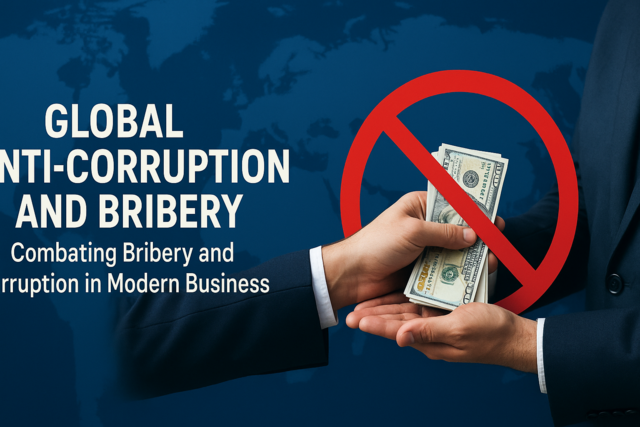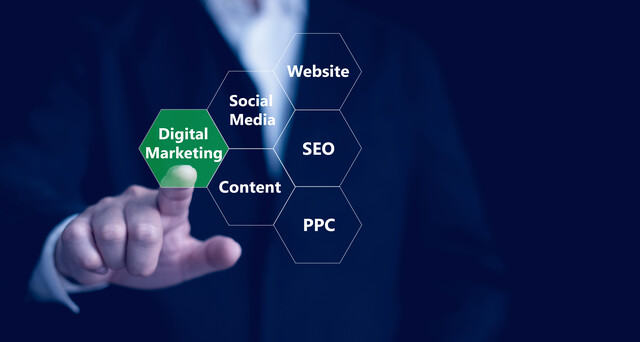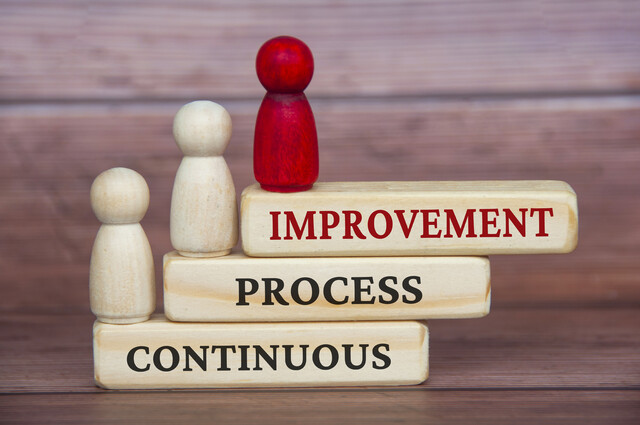Services Marketing
Another "product" is services. These are the services you get from doctors, lawyers, telecom companies, hospitality, and financial services, and more.
There are five main characteristics to a service, and they differentiate between a good and a service, and each are considerable when deciding to market a service.
-
Lack of ownership
-
Intangibility
-
Inseparability
-
Perishability
-
Heterogeneity
1. Lack of ownership
A consumer cannot own a service. You cannot own a doctors appointment, and you cannot store an airline flight on your shelf. A service is used for a short period of time, with a beginning and an end. For example, when you rent a car, the service begins when you first rent the car, and it ends when you return it.
2. Intangibility
You cannot physically hold a service. You cannot touch a service.
3. Inseparability
The service cannot be separated from whoever performs the service. A product can be purchased and removed from a store and kept, a service cannot.
4. Perishability
A service cannot be stored, and it lasts for a certain time period. If you hire an attorney to write a trust for you, you will need to hire the attorney again for the next service.
5. Heterogeneity
Services are provided by humans, for the most part, and therefore each service experience cannot be the same. For example, calling Verizon to discuss your bill will have one level of experience for one person, and perhaps a different experience for another customer.
Think!
What are the differences between products and services?
How are they alike?
Now that you can define a service, it is time to learn how to market one. Again, like what you learned in product marketing, the marketing of services involves the seven P's. However, the P's are different for a service, and work differently than for products.
1. Product
2. Place
3. Promotion
4. Price
5. People
6. Process
7. Physical Evidence
1. Product
As learned above, the service product is intangible, unlike products such as clothing or dish washing detergent. A service product is a hotel, massage therapist, or a dentist visit.
Because the service cannot be held, it is imperative the service is well defined in advance. For instance, a spa will blueprint all the services offered, along with the procedure for each service.
2. Place.
This is where the product is located. A gas station would best be located near freeway exits. A doctor or lawyer doesn't usually have walk-in business, so being in an office building or office park is acceptable.
3. Promotion
Service products must be promoted carefully to get increased business. And since they do not have packaging, they will need to focus on advertising and other forms of promotion. In addition, since a company will have competitors, it is key that a service provider find a way to stand out among other promotions.
4. Pricing
Pricing a service can be more difficult than pricing a tangible product. Pricing must include all the aspects involved in the service. When you go to a dentist, you are not just paying for the dentist's time and supplies. You are also paying for the overhead, such as rent, employees, and insurance. Because of this overhead, service providers must price their service properly.
5. People
People are obviously an enormously important part of service marketing. The people who provide the service, define it. If you own a law firm, the staff you choose defines your business. Employees are the face of the company. The receptionist is often the first person a customer sees, and the customer's opinion of the first will affect later perceptions.
This is why it is key to hire and train the right people for an organization.
6. Process
The process is how the service is delivered to the customer. This is also important, as how a customer is served, will determine whether a customer will return.
Consider Domino's Pizza and UPS. Both companies promise fast service. This fast service is promised above and beyond the product they offer. The product still has to be of quality, while satisfying the promise of the fast service.
7. Physical Evidence
This is an important aspect of services, since they are intangible products. A service must offer some physical evidence to go alongside their service. Think of an upscale attorney's office, filled with fine leather furniture and beautiful mahogany bookcases filled with law books.
Or consider a restaurant that promises a romantic experience. It is filled with beautiful and comfortable tables and chairs, soft music, and is dimly lit for ambiance. This is all physical evidence.
Think!
Think of a time when you received a service, but were unhappy with the physical evidence.
What made you unhappy?
Marketing Channels
Marketing channels are the method of getting a product to the consumer. There are five main routes the product can take:
1. Manufacturer to Consumer
2. Manufacturer to Retailer to Consumer
3. Manufacturer to Wholesaler to Consumer
4. Manufacturer to Agent to Wholesaler to Retailer to Customer
5. Internet
1. Manufacturer to Consumer
This route is when the manufacturer sells directly to the consumer. Examples of this include a bakery that sells directly to a customer, or a crafter that sells directly to a customer.
2. Manufacturer to Retailer to Consumer
This route involves the retailer buying products from a manufacturer, and then selling those products to the customer. Most consumer goods fall into this category. For example, Target buys a line of towels from a towel manufacturer, and then sells those towels to the retail customer.
3. Manufacturer to Wholesaler to Consumer
A wholesaler takes large lots of product and breaks it down for resale. By doing this, the consumer gets a better price. An example of this is Costco, a warehouse store that purchases products in large lots, and then breaks them down, which results in a savings for the consumer. It is often necessary to buy a membership at these stores.
4. Manufacturer to Agent to Wholesaler to Retailer to Customer
This route involves using an intermediary, or "middleman." This middleman assists with the sale, and receives a commission for doing so. For example, a florist would use a middleman to buy flowers at a flower mart. Since flowers are perishable, the products must move quickly. The flower mart isn't able to contact all the florists in the area, so using a middleman is the best choice.
5. Internet
The Internet is becoming a leading way to get products to consumers. It allows more time to fulfill orders, and allows the sellers to use drop-shippers to fill orders. There are low-cost websites with built-in shopping carts to make the process easier for the seller.
In addition to these channels, there are other considerations a company must make.
These are:
-
Type of Product
-
The Market
-
The Business
-
Any Legal Issues
Type of Product
Before a channel can be chosen, there are questions that must be asked about the product.
These are:
-
Is the product fragile or perishable?
-
Is the product very technical, or need to be sold by a specialist?
-
Is the product customized?
-
What type of product -- convenience, specialty, etc.?
-
What is the image the company wants to convey?
The Market
-
Is the market wide, or just a small geographic area?
-
Is the product going to be sold internationally?
-
How does the competition sell? Which channels do they use?
The Business
-
How large is the business? Does it have a sales force?
-
What is the goal -- revenues or increased profit?
-
Does it have a successful distribution network, and use supply chain management effectively?
-
Does the company want control over the distribution?
Legal
-
Is the product legal, or are there any issues regarding the product?
-
Are there any risks if the product is sold to an inappropriate consumer?
Once these issues have been resolved, it is time to learn about supply chain management, the process the product takes from beginning to end.
Supply Chain Management
One of the most important aspects of the manufacturing process is supply chain management (SCM). SCM is the streamlining of a sellers supply-side activities in a way that provides good value for the consumer as well as maximizing profit for the manufacturer. The supply chain involves everything from the production of the product, the marketing involved, the MIS efforts needed, as well as the shipping and delivery of the products.
SCM is mainly made up of the operations, procurement, IT and logistics departments, and how they come together to get a product to market is the supply chain.
SCM can be broken down into the 3 categories that make up its name.
Supply � The supplies that must be delivered.
Chain � The chain that moves the supplies from supplier to customer.
Management � The management of this process.
Key Terms!
Supply Chain Management
The process of moving a product from beginning to end
The chain for the average tangible product is:
-
Supplier
-
Procurement
-
Manufacturing
-
Product
-
Inventory
-
Distribution
-
Logistics
-
Retail
-
Customer
The supply chain begins and ends with the customer.
Customer
Customers start the chain when they decide they want a product. The customer orders the product from the company, which starts the chain moving. The customer will request the product on a certain date, in a certain quantity. If the product must be manufactured, the order will go to the production facility.
Planning
The customer sales order will combine with other orders, and will go to the planning department. The planning department will create a plan to fill the order. In order to manufacture the product, raw materials will need to be purchased.
Purchasing
The purchasing department will purchase all the raw materials needed to produce the product that the customer wants to buy. Purchasing will select from approved suppliers, and place the order. The purchase order will specify the quantity and date the raw materials must be delivered.
Inventory
Once the raw materials are received, they are moved to a warehouse and stored, until they are needed for production. Once delivered, the supplier will send an invoice to the buyer.
Production
The company now has the raw materials needed to make the product. Manufacturing will take the raw materials from inventory, and manufacture the product. Once the product is manufactured, it is moved to inventory to wait for transportation to the retailer.
Transportation
Once the finished product is in the warehouse, it must get to the retailer. The company's shipping department will find the most economical way to get the completed products to the retailer and eventually the customer. Once the retailer receives the products, the manufacturer will send an invoice for the products.
Supply chain management is the heart of the operation, and must be done as efficiently as possible. SCM is a large department in most companies, and it has some of he most valuable employees. In order to make the process easier, most companies use SCM computer programs to assist with the process.
Think!
In your day-to-day life, what logistical issues do you deal with?
SCM has three levels that management will focus on:
1. Strategic
At the strategic level, management will look at the company as a whole, and will make any decisions based on what is best for the company. This includes locations of any manufacturers, suppliers, what kind of product is being made, as well as the markets being sold to.
2. Tactical
Tactical decisions will attempt to reduce cost, while still providing value to the customer. SCM will devise a tactical strategy that works with suppliers, logistical firms, and transportation companies to develop the best way to work the chain.
3. Operational
Operational decisions are the day-to-day decisions that must be made as products move through the chain. This could involve dealing with warehouse issues, taking orders from customers, or scheduling production. Large warehouses often have hundreds of employees that must deal with several orders coming and going. Logistic departments in large corporations can amount to hundreds of employees.
Key Terms!
The Three Levels of Supply Chain Management
Strategic
Tactical
Operational

























